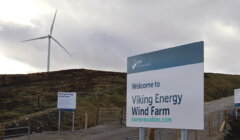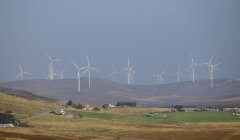Letters / A mechanism for manufacturing consent: problems at the heart of the energy strategy consultation
The public consultation on the Draft Shetland Energy Strategy is being presented as a neutral exercise, but in reality it is does not seem designed to understand public opinion at all — rather, it appears designed to produce a veneer of public support.
The agree/disagree questions are framed around values that no reasonable person would reject: fairness, affordable energy, a “Shetland approach.”
Yet the survey gives no way to separate agreement in principle from confidence in practice. If someone ticks “agree,” they are recorded as supporting the strategy as a whole, even if they strongly disagree with how the council proposes to deliver it.
Take Question 2 of the online survey: “Do you agree with the five key aims of the Strategy?”
Of course people will agree with fairness and accountability — but the question converts that agreement into supposed support for whatever policies are present in the Draft Energy Strategy itself.
It means a resident who agrees with the principle of fairness today may later react with dismay at large-scale development, only for the council to say: “Well, you agreed with this.” The survey has been written to make this possible, and that is not consultation — it is a mechanism for manufacturing consent.
If you have not read the document itself, you might endorse universally positive concepts but be unaware of what is actually proposed under those headings.
This becomes clear when one looks at page 11 of the Shetland Energy Strategy.
Under the sub-heading of “Inclusive Growth”, the document states that “The purpose and structure of EmPowering Shetland [is to] grow capacity in Shetland to support large-scale development”.
This sits alongside bullet points about fairness and community well-being, giving the impression that large-scale industrial expansion is an inclusive social good rather than a major planning and environmental decision.
Warm-sounding language about “inclusive growth” is therefore being used to normalise the very developments that many residents might never knowingly support — and the survey’s structure helps ensure they appear to have agreed with it.
The deeper problem is that this pattern appears throughout the strategy. It speaks repeatedly about “whole-system planning,” yet in practice major developments — Mossy Hill substation, SSEN’s transmission works, the Energy Isles project, hydrogen and ammonia projects — are being advanced as separate applications and proposals, preventing the cumulative environmental assessment the strategy claims to value.
It uses language of protection while omitting any enforceable safeguards on deep peat or drinking-water catchments. It provides reassuring definitions of “clean energy” that ignore scientifically recognised risks.
Hydrogen itself is not a warming gas, but studies show that when it leaks it slows the breakdown of methane in the atmosphere, a gas which does increase climate warming.
There also needs to be a guarantee that sulphur hexafluoride will be ruled out in all switchgear.[i] [ii]
Compounding all this is a significant governance issue. While the Energy Transition Taskforce did not itself draft the strategy, it plays a central role in shaping the policy environment in which the strategy sits (see p.6 of the Energy Strategy).
Two of its members — David Thomson of Shetland Aerogenerators and Daniel Gear of Voar Energy — lead organisations that are directly involved in Shetland’s renewable-energy developments.
Shetland Aerogenerators is linked to major projects such as Energy Isles and the Neshion Energy Park, and Voar Energy is active in feasibility work, community-benefit modelling, and policy consultancy for renewable projects.
Both companies participate in SIC’s advisory and oversight structures, including EmPowering Shetland and the Taskforce, which influence how “opportunities,” “inclusive growth,” and “fair share” are defined in practice.
In effect, developer-aligned voices are embedded inside the very mechanisms that interpret and guide Shetland’s energy policy, while there is no equivalent formal forum for residents who are sceptical of large-scale development or concerned about environmental and community impacts.
That imbalance is not partnership; it is a structural conflict of interest.
Meanwhile, the council provides no equivalent forum for those sceptical of the mass industrialisation of Shetland to express their concerns or shape policy.
Developers have a seat at the table; those raising environmental or community concerns do not.
Unless the Energy Strategy and associated survey are questioned, there is a real possibility that the council will later point to these survey findings as evidence that the public supported the further industrialisation of Shetland.
The council may argue that everyone is free to comment in the text boxes. But the overall structure ensures that most responses will be counted as “agreement,” producing the result the council wants.
Decisions that will shape Shetland for generations must be made through genuine consent, not through a consultation apparently designed to steer people toward a result that the council wants.
Adrian Brockless
Frank Hay – Sustainable Shetland
Ernie Ramaker – Save Shetland
[I] https://assets.publishing.service.gov.uk/media/624eca7fe90e0729f4400b99/atmospheric-implications-of-increased-hydrogen-use.pdf
[ii] https://www.nationalgrid.com/stories/energy-explained/what-is-sf6-sulphur-hexafluoride-explained
The online consultation of the Draft Shetland Energy Strategy can be found here.





















































































